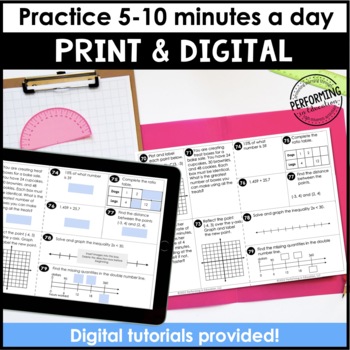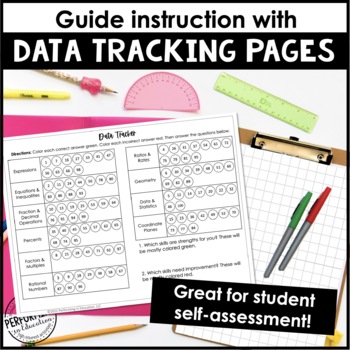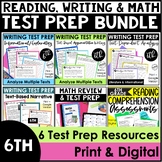6th Grade Math Review & Test Prep | Spiral Review
- Zip
- Google Apps™

What educators are saying
Also included in
- If you're getting ready to start test prep, this ultimate test prep bundle has everything you need for reading, writing, and math! With 5 complete resources focused on preparing your students for state testing and end of the year testing, you'll have your students ready to rock the test in no time!Price $23.00Original Price $33.00Save $10.00
Description
Review all your grade-level math standards with this print and digital math booklet! It's perfect for test prep or end of the year review. This resource provides 100 spiral review math questions that focus on specific CCSS-aligned math skills. Each standard is covered multiple times throughout the resource.
This math booklet is fully editable in both the printable version and the digital Google Slides version. Plus, tutorials are included to make assigning, editing, and using this resource super simple and user-friendly.
All questions are aligned to a Data Tracking Sheet, which your students can use to track their skill mastery and determine which skills need more practice.
PRINT & DIGITAL - FULLY EDITABLE
Be the first to know about my new discounts, freebies and products:
• Click here to follow my store.
***************
Copyright © Performing in Education, LLC. All rights reserved by author. This product is to be used by the original downloader only unless additional licenses are purchased. Copying for more than one teacher, classroom, department, school, or school system is prohibited. This product may not be distributed or displayed digitally for public view (distributing to your students and their families on an elearning platform or through email is not considered posting for public view). Failure to comply is a copyright infringement and a violation of the Digital Millennium Copyright Act (DMCA). Clipart and elements found in this PDF are copyrighted and cannot be extracted and used outside of this file without permission or license. Intended for classroom and personal use only.
*****************************************************************************






